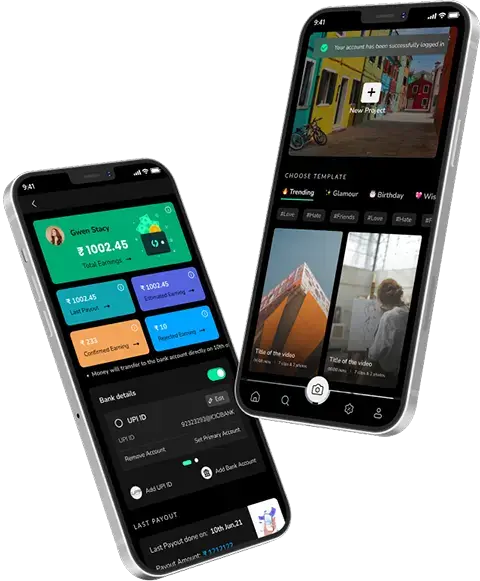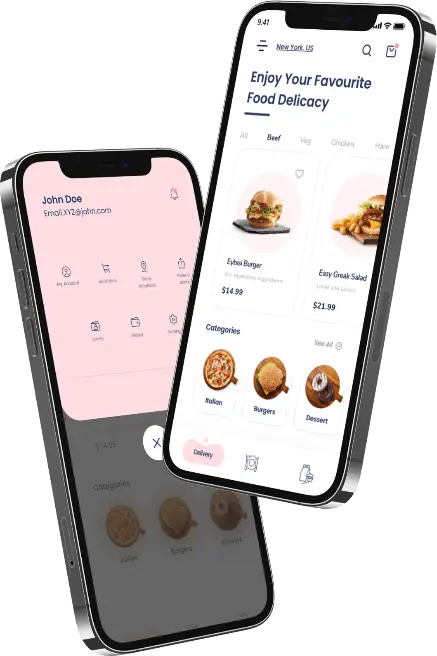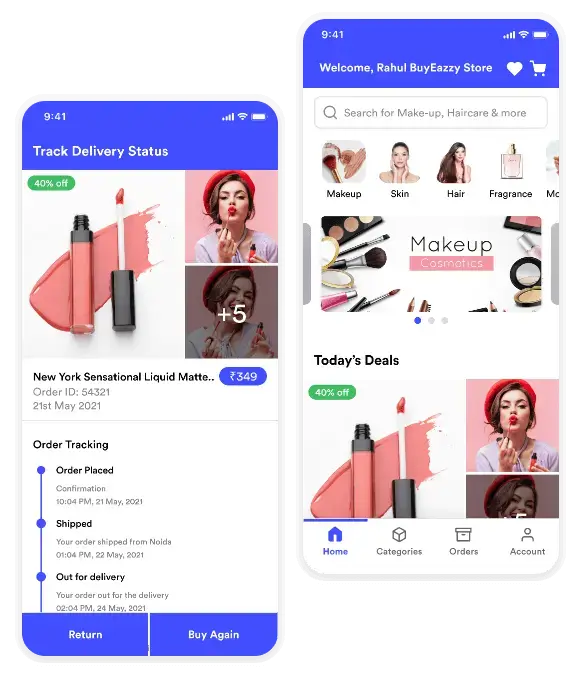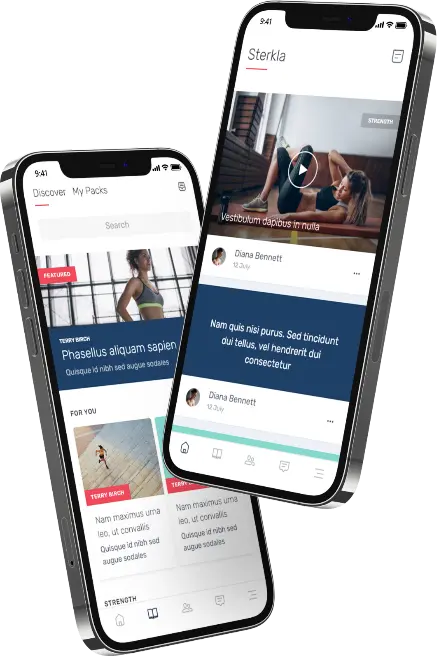Dubai is regarded as a major international business hub due to its strategic position connecting Asia, Europe, and Africa. The business practices followed in Dubai are also a major reason for potential investors to establish business there. These policies and HRMS must be followed and maintained for the company to operate without interruption.
HRMS is now a must-have in a fast-paced city such as Dubai, where compliance is complex and expectations are high. HR software can assist businesses in Dubai in adhering to these guidelines efficiently and accurately. HR software can benefit your business in numerous ways, from recruiting to development and training.
The data is precise: The market for HR software was valued at AED 20.51 billion in 2024 and is expected to grow to AED 162.62 billion by 2031, at a staggering CAGR of 10.10%. Companies are jumping on the HRMS train to automate routine tasks, make smarter decisions, and keep their employees content and satisfied.
Companies must choose the best HR software by 2025. This is determined by various vital elements, such as the software’s adaptability to the specific needs of the business and its potential for growth, ability to integrate with existing systems, adherence to the unique regulatory framework of UAE, and user-friendly interface. If you’re curious about HR software’s capabilities, let us help you understand the process.
Let’s examine the basics of HRMS software development in Dubai, its advantages, and the reasons it’s changing workforce administration in Dubai.
What is HRM Software?

HRMS, also known as Human Resource Management Software, allows large and mid-sized companies to streamline their human resources management processes. HR software solutions control management procedures like recruiting, work delegation, performance assessment, and payroll management.
The human resource management system extends beyond human resource information system capabilities by adding recruitment systems, processing benefits, and performance appraisal methods. Companies can manage employee life cycles by using HRMS since it gives dynamism to the workforce that extends from the hiring process to employee development. The system links the employee database’s management and the strategic human resource operational requirements.
Benefits Of Having HR Management Software In an Organization
The evolving dynamics of the business environment globally and the diverse policies that companies adopt to combat COVID-19 have added to the demands on HR departments. As the company grows and establishes its presence in various locations, the duties of HR managers become more complex. To ensure that employees remain active, motivated, and devoted to the organization’s goals, it’s essential to use HRM software. It aids in improving the efficiency of your HR team, thus improving the satisfaction of employees.
If your business is in the market for HRM software, review the advantages below to discover the best software for managing personnel that will satisfy your company’s needs.

Easy Onboarding And Recruitment
Utilizing an HR software program for recruitment can help you understand the roles and responsibilities clearly, making it easier for human resource professionals to find the most qualified candidates. Using an automated system that handles HR operations plays a vital part in the onboarding process for employees. The correct kind of onboarding is crucial to ensure that new employees feel at ease in their new work environment.
Today, recruitment isn’t only about filling vacancies. It’s about managing talent and improving an organization’s overall efficiency. Employing HR software can help newly hired employees communicate and collaborate with their co-workers easily and assist them in understanding the culture and values of their workplace.
Improves Productivity
HR software is regarded as a productivity booster for a business. In today’s highly competitive work environment, employees must work on their projects instead of focusing on routine tasks. Companies of all sizes and industries use automated tasks to create profits. HR software is one method used by companies to implement digital transformation.
HRMS automates the problems you have to deal with. Dealing with one source makes everything, including upgrades, contracts, service level agreements, etc., much more manageable.
Security and Compliance
Legislation and regulations are constantly changing, and you could potentially lose money if you don’t have the resources or the time to stay up-to-date with the latest developments. HRMS is up-to-date with any changes and will automatically update the system, taking the stress out of the equation.
Your HR team handles sensitive data that your employees have trusted you with. You must ensure the security of employee data and that there is no way for it to be used fraudulently. Beware of costly security problems, and rest assured that your HRMS will be there to help you with built-in security and encryption features.
Monitor Employee Performance and KPIs
A KPI is a tangible value indicating how an employee meets their goals. An HRMS can assist the HR department and management develop and manage KPIs and 360 questionnaires, including self-assessment and overall goals. The fact that all of this information is available together allows employees to concentrate on their goals rather than be concerned about finding the location where all their assessments and targets are kept.
In addition, HRMS systems monitor absences and notify HR managers about employee attendance and whether or not there could be a reason to be concerned. HRMS software in Dubai also allows monitoring of employee retention and the length of time the employee is in their job and reminds HR managers that it’s time to make a promotion.
Cost-cutting
It’s not surprising that the biggest reward when you combine HRMS functions across the world is the money you save. HRMS has a lot of hidden and obvious costs, which increase when you use multiple systems. To avoid having several licenses and maintenance agreements with different suppliers, locate and negotiate multi-country access to the system.
This will not only streamline your process and reduce costs for suppliers. It also offers the possibility of saving money on legislative compliance and the tangible benefit of better communication between teams with different nationalities but within the same corporate culture.
Less Stress
Let’s not forget the pressure and stress employees can endure whose work requires them to “work across” different borders, including national and territorial. Fragmented systems face additional (and unnecessary) problems that must be considered.
The past few years have been marked by increased emphasis on ensuring employees’ mental and physical well-being. Sure, many factors affect well-being. While this might also be individual, smoothing out the “cross-border HR bumps” impacts employees with responsibilities that could be stressful for international workers. Lower burnout and stress levels are good things to have.
Top Characteristics from HRMS Software in Dubai

Every top mobile app development company in UAE understands the importance of integrating the best features in HRMS software to help make HR tasks more manageable and increase productivity levels. Some essential features include:
Leave Management System
The leave management system allows employees and employers to request leave online. HR departments can then simply monitor and approve requests. The system offers clear access to leave guidelines, allowing precise attendance monitoring.
Employee Self-Service Portal
An employee self-service portal allows workers to view their payroll data, review their leave balances, and access their records without the assistance of HR. The payroll system increases operational efficiency and reduces the administrative burden.
Payroll Management System
Payroll management software manages payroll tasks by computing salaries and processing payments using tax deductions, leading to rapid and accurate wage payments. This system benefits employees through an automated system that avoids mistakes and ensures compliance with UAE labor laws.
Performance Management
A reliable HRMS software in Dubai allows companies to conduct performance assessments, set employee goals, and provide feedback opportunities. The software enables HR personnel to monitor staff development via progress tracking while also allowing data-driven strategies for workforce development.
Recruitment and Onboarding
An HRMS that automates job announcements, controls interview scheduling, and tracks applicants simplifies hiring. Thanks to the onboarding feature, the software also makes the integration of new employees into the business manageable.
Time Monitoring and Leave Management
Attendance management is among the distinctive features of the HRMS system, which other software platforms do not provide. The HRMS efficiently handles tasks like leave eligibility, leave encashment, the total number of leave days used, the remaining balance, and absence.
A crucial strategic aspect of the HRMS function is measuring the level of satisfaction with work and absence. Different holiday lists can be created within HRMS and given to employees based on personal preferences. A variety of types of holidays could be created based on the needs of your business.
Training
Training bridges the knowledge gap and the gap in employees’ skills. Every company offers training to bridge this gap. HRMS helps identify the gaps in skills. It offers management guidance on managing employees’ needs for training and helps keep track of the huge expenditures needed to develop and train employees.
In the HRMS, you can design an instructional program and plan training sessions. After training, the employees can provide feedback through Training Feedback and then receive the outcomes.
Transfer Management
Internal mobility refers to moving a person from one job to another, usually in a different place, department, division, or unit. An HRMS Employee Transfer form can record staff transfers to other departments or businesses. Transfer paperwork must be submitted prior to or following the date of transfer. The employee updated the document with the latest changes added to the transfer details table.
Travel and Expenses
There are occasions when employees are required to leave the country for work-related reasons, and the business is accountable for some of their travel expenses. Employees can request funds to cover professional travel via the Travel Request option within HRMS. In addition, you can request an advance payment from the company using an HRMS employee advance feature.
Employee Incentive
Employee incentives can be a means of motivating and rewarding employee performance in addition to their normal compensation. When you require incentives, you can make Employee Incentives using payroll software that allows for a specific payment entry. A solution for businesses looking to improve the efficiency of their employees is to provide incentives.
Retention Bonus
Retention bonuses are a reward given to employees in addition to their base salary to ensure they remain productive. In the payroll software, retention bonuses can be set up for an employee for a specific period. As the number of employees increases, HR personnel are responsible for maintaining the employees’ data and other important documents, making it difficult to provide superior service to everyone.
Succession Planning
Using this HRMS feature, companies can identify high-potential employees and create plans to help them prepare for a future leadership position. It also helps with succession planning and growth strategies by helping HR managers monitor employees’ performance, abilities, and goals for the future.
Integration Capabilities
The capability to allow HRMS software to be integrated with other company systems is crucial to ensure the smooth transfer of information. Other software applications like payroll and accounting systems, candidate relationships management (CRM) tools such as Enterprise resource planning (ERP), human capital management (HCM) systems, and time and attendance systems must be able to interface with these systems. Integration provides a complete overview of the information about employees across a variety of systems by eliminating duplicate data, reducing the need for manual entry, and enhancing the accuracy of data.
Wellness of Employees
In the past couple of years, employee well-being has become a top priority for many companies and their HR departments, perhaps more so because of the current global pandemic. This translates to developing fitness and wellness programs and education initiatives, and encouraging healthy habits like exercise and a healthier diet. A healthier workforce is significantly more likely to operate effectively and productively.
An HRMS is a great tool for tracking and monitoring involvement in such initiatives, setting wellness goals, and disseminating important health and wellness information. You can also consider including wellness-related benefits and rewards in your compensation plan.
Multi-Territory Workforce Management
Each time you cross a country, employment laws and rules alter. It may not be to a large extent, but there is some change, even if it’s only in payroll management. If your employees are homed neatly within a nation’s boundaries, it is possible to leave this section out. However, with the rise of remote and home working and virtual teams, companies increasingly need to have multi-national workforces.
Except if you need an individual HRMS for each location (which will negate the main reason for employing an HRMS in the first place!), you require an HRMS that can handle diverse tax regimes, different rules regarding labor (e.g., variations in the limits of working hours), and different reporting compliance requirements.
Self-Service for Employees
Another important element of a modern HRMS is the ability to provide self-service for employees. It’s an essential feature for those who want the advantages of your system to go over the department of HR and into the boardroom. It could be as easy as having each employee able to make requests for pay-for-time off. It could also be having a complete HR portal that has a customized dashboard for each employee and giving them access to many HR functions, from choosing benefits options to arranging (and virtual attendance at) the most recent education and training. It’s important to remember that some of the mentioned elements and functions will likely be similar regarding the processes or categories.
Things to Consider While Choosing HRMS Software in Dubai

Selecting the most suitable Human Resource Management System (HRMS) is no longer an option but an essential decision that could dramatically improve your organization’s efficiency and productivity. With so many options on the market, deciding on the ideal HRMS could be overwhelming. This guide provides the essential aspects of hiring the best partner for mobile app development in the Middle East to create and choose the best HRMS software for managing business workflows.
Identify Your Business Needs
Get to know your company’s specific HR challenges and requirements. Every business has its unique requirements to manage an enormous workforce and ensure that employees comply with UAE labor regulations or enhance employee engagement. If you can clearly define your goals, you can narrow the options of software that meet your goals.
Scalability and Customization
When your business expands, your HRMS must keep up with the growth. Opt for a scalable system to accommodate new employees, departments, or business locations. Customizing your system, particularly in a culturally multicultural environment such as the UAE, is also important. Your HRMS should be able to modify workflows and processes to fit your company’s specific style and culture.
User-Friendly Interface
A complicated, difficult-to-use HRMS may reduce productivity rather than increase it. Pick software with a simple interface that requires no training for your employees. Self-service features for employees, which allow employees to control their personal information, such as leave requests and pay details, are especially useful in reducing time and decreasing the workload of HR.
Integration Capabilities
Modern companies rely on various platforms and tools to manage diverse processes. HRMS systems should be able to integrate seamlessly with existing systems, such as ERP, accounting tools, and Biometric Attendance Systems. Integration helps reduce the need for manual data entry and ensures that all departments work on time.
Conformity to UAE Labor Laws
The UAE has specific laws and regulations to which businesses must adhere, including WPS (Wage Protection System) compliance, visa tracking, and calculation of employee benefits. A good HRMS should be crafted to ensure that you completely comply with the legal requirements while minimizing the risks of legal penalties or pitfalls. Find out if the software provides upgrades to accommodate any changes to labor laws.
Cloud-Based vs. On-Premises Solution
Choose a cloud-based HRMS or an on-premises system. Cloud-based HRMS are flexible and allow workers to connect HR resources anywhere, an important benefit for companies with hybrid or remote work models. On-premises solutions, on the other hand, might be better suited to organizations that value security and data control. In the UAE, where many businesses operate globally, cloud-based solutions are growing in recognition due to their ability to scale and accessibility.
Data Security and Confidentiality
Protecting employees’ personal information is a major priority, particularly in the current era of growing cyber-attacks. Ensure the HRMS software complies with the international cybersecurity standard and provides solid data encryption, multi-factor authentication, and periodic security upgrades. UAE companies that handle sensitive employee data, including salary information and personal records, should not be sloppy about this aspect.
Mobile Accessibility
HRMS applications accessed via mobile devices are essential in today’s hectic workplace. Employees must be able to check their personal information, apply for leave, or access pay slips from their phones. HR managers, too, should be able to access crucial information on the move to facilitate faster decision-making and increased efficiency.
Vendor Support and Training
Implementing HRMS software is a process that requires a curve. Pick a company that offers extensive support, including workshops for your HR staff and employees. Prompt customer support is crucial for resolving any issues that occur. Local or international vendors that have a presence in the UAE are generally aware of regional requirements and provide better assistance.
Cost and ROI
While cost is a crucial element, it shouldn’t be the only determinator. Assess the value that software provides to your business through improved efficiency, compliance, and satisfaction. Determine the ROI when you consider time saved, fewer mistakes made manually, and simplified HR processes. Numerous companies in the UAE provide tiered pricing plans, which allow companies to pick the plan that best suits their budget.
Employee Engagement Features
Encouraging employee engagement is crucial in a multicultural workplace such as the UAE. Find features that increase employee satisfaction and efficiency, such as the ability to track performance, feedback systems, and rewards programs. A well-rounded HRMS should include automated alerts and dashboards that allow for efficient communication.
Future-Ready Capabilities
With the rapid advancement of technology, businesses should consider investing in software that utilizes AI and machine learning. Tools like predictive analytics, automated resume screening, and sentiment analysis can help HR professionals make informed decisions and improve efficiency.
Final Thoughts
With the growing interest from investors, businesses are expanding in Dubai. People who work in Dubai should be aware of the benefits of partnering with an experienced developer for software development in Middle East to choose and develop an HRMS software. Recruitment, onboarding, data entry, and attendance control are a few of the routine tasks that need to be done with precision.
Using HR control software in Dubai can improve your company’s HR procedures, from recruiting to compliance. You can make the most of this efficient tool by educating your employees about their needs, determining the best software, and encouraging your own adoption. Furthermore, using information analysis and safeguarding data can further enhance your HR skills. Remember that continuous advancement is essential to remain relevant in Dubai’s ever-changing business environment.
Build a Smarter Workforce with Techugo!
Let’s create the perfect HRMS solution for your business. Get in touch today!
Post Views: 886




 SA
SA
 KW
KW
 IE
IE AU
AU UAE
UAE UK
UK USA
USA
 CA
CA DE
DE
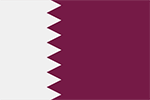 QA
QA ZA
ZA
 BH
BH NL
NL
 MU
MU FR
FR











